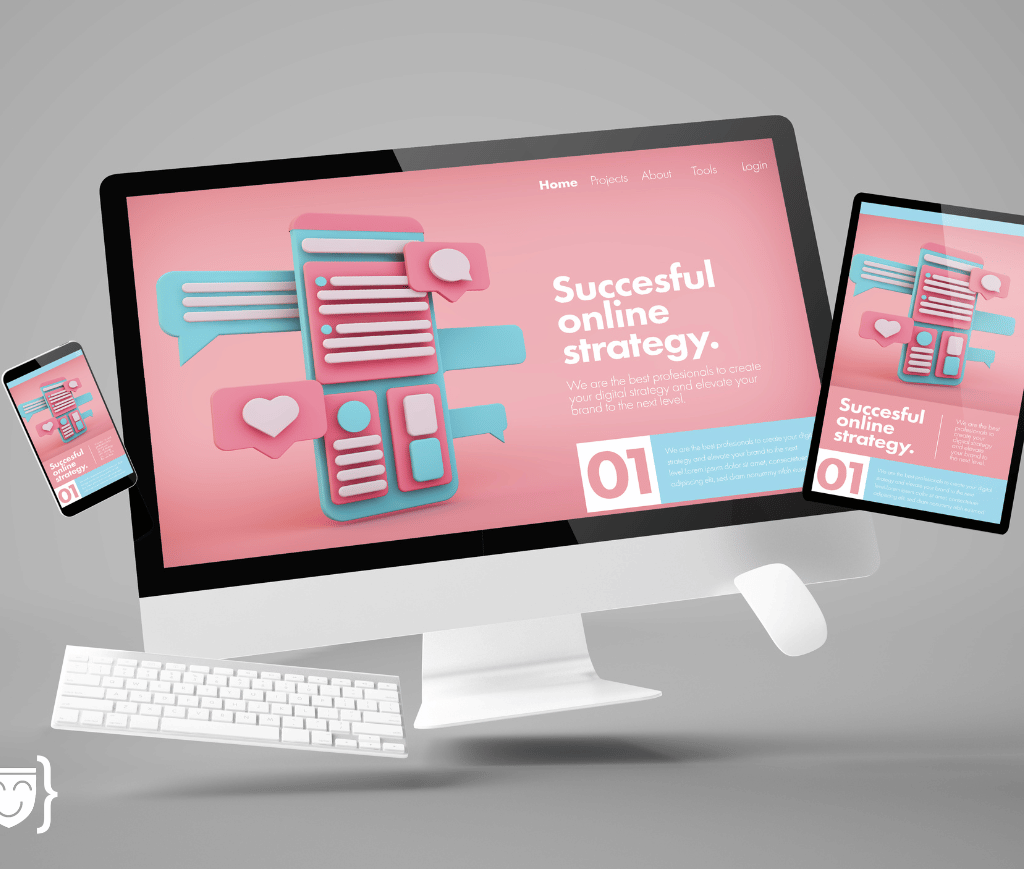
In today’s digital landscape, where there are over 400 million active websites, implementing an effective user experience (UX) strategy is crucial for capturing user attention and driving conversions
While the initial focus of UX was on website and page loading speed, it has evolved to encompass a broader range of elements that maximize content impact, site efficiency, and user satisfaction. In this article, we will explore the evolving concept of UX strategy, its importance, and provide examples of successful strategies in action.
What is UX Strategy?
UX strategy is the process of identifying and prioritizing the features and functions that impact overall user experience, addressing areas that need improvement, and aligning them with business goals and resources1. It combines the business mission, IT capabilities, and user needs to ensure that the right concerns are addressed with the right resources.
A strong UX strategy takes into account the long-term vision, innovation, customer research, and design elements. It aims to create an intuitive and accessible experience that resonates with users and delivers value1.
Long-Term Vision
A good UX strategy starts with a clear understanding of the end goal. By knowing the target users and what you aim to provide for them, you can prioritize the most important aspects of your website or application. For example, if your mission is to create an intuitive and accessible forum for web developers, you would emphasize the courses you offer and make the interactive forum a prominent feature1.
Innovation
Innovation is a crucial component of UX strategy. It involves staying updated with the latest technology and customer needs, and continuously improving the design elements of your website or application. Incorporating cutting-edge elements, such as animated features, top-notch accessibility, and SEO best practices, can enhance the user experience and keep your platform ahead of the competition1.
Customer Research
Understanding your customers is essential for an effective UX strategy. By collecting real-time feedback through support desks or focus groups, you can identify common pain points and address them in your strategy. This feedback-driven approach ensures that you are continually improving the user experience and meeting customer needs1.
Design
Design plays a critical role in UX strategy. It should bring value to the customer, be visually appealing, and complement your product or service. Choosing the right color scheme, layout, fonts, and product images can significantly impact the overall user experience. If you lack design expertise, consider working with a graphic designer or web developer to create a visually appealing and user-friendly interface1.
Why does UX Strategy matter?
While page loading speed remains an important factor in user experience, it is not enough to deliver a great UX. Research shows that a non-responsive design is a top reason why visitors leave a website1. In fact, 73% of web designers believe that a non-responsive design contributes to user bounce rates1.
Improving UX has become a top priority for digital and marketing professionals, with 49% of them citing it as their top priority in 20221. UX has a significant impact on customer satisfaction, with over two-thirds of digital professionals stating that it positively affects customer satisfaction and brand perception1. Therefore, if you want to increase sales and customer loyalty, a strong UX strategy is essential.
Why UX Strategy Is Important
A well-defined UX strategy is crucial for both businesses and end users. It helps company executives see the value of UX design, fosters company-wide alignment, provides a clear measure of success, creates a user-first mentality, and connects all touchpoints between brand promise and customer experience1.
1. It helps company executives see the value of UX design.
A UX strategy demonstrates the role of design in achieving business goals, such as improving customer loyalty, increasing market share, and gaining a competitive advantage. It helps company executives, clients, and stakeholders understand the value of UX design and the impact it has on the bottom line. By showcasing the work of the UX team and its contribution to the business, a UX strategy enables leadership to comprehend the importance of design and allocate resources accordingly1.
2. It fosters company-wide alignment.
A well-defined UX strategy aligns business goals, user needs, and the technical capabilities of the organization. It serves as a shared vision that guides every team’s decision-making process. This alignment promotes internal collaboration and ensures that everyone works towards the same goal. It saves time and resources during the design process and provides a cohesive brand experience for customers1.
3. It provides a clear measure of success.
Crafting a UX strategy involves setting SMART (Specific, Measurable, Achievable, Relevant, Time-bound) UX goals before starting a project. Defining objectives and metrics helps in measuring progress and success. It prevents wasting time, energy, and resources on ineffective design methods and allows for better decision-making based on the impact on customer experience1.
4. It creates a user-first mentality across the company.
A UX strategy puts users at the forefront of decision-making. It helps everyone in the organization, including designers, marketers, customer service representatives, and CEOs, understand the end users’ goals and pain points. By considering the user perspective, companies can make customer-centric decisions that lead to increased conversions, a stronger brand reputation, and a competitive edge in the market1.
5. It connects all touchpoints between brand promise and customer experience.
When a brand’s promise doesn’t align with the actual user experience, customers are more likely to switch to a more reputable brand. A UX strategy ensures that the brand promise matches the user experience, creating a consistent and satisfying journey for customers. It helps bridge the gap between brand promises and customer expectations, ultimately building trust and loyalty1.
UX Strategy Examples
To further understand how UX strategy works in practice, let’s examine a few examples of successful strategies implemented by well-known companies.
Google Search
The Google search page is a prime example of an excellent UX strategy. It has a clean and minimalist design, with the central search bar being the primary focus. The simplicity of the page ensures that users are not confused about how the search function works. By prioritizing the most critical feature and minimizing clutter, Google provides a seamless and efficient user experience1.
LinkedIn Onboarding Process
LinkedIn’s onboarding process is designed to guide users through improving their own experience on the platform. New users are given specific tasks to accomplish that help them “get the most out of LinkedIn.” Each task is broken down into simple steps, ensuring that users can easily navigate and understand the platform’s features. This interactive design keeps users engaged while conveying the utility of LinkedIn’s service1.
Rover Pet Care Service
Rover, a pet care service, provides an exceptional user experience from the moment users land on their homepage. The website features a simple form that asks users what type of care they need, where they live, when they need care, and the size of their pet. By gathering this information, Rover can generate relevant search results tailored to each user’s specific needs. This personalized approach reduces the time users spend searching for relevant information and enhances their overall experience1.
These examples demonstrate how a well-executed UX strategy can enhance user satisfaction and drive business success. By focusing on simplicity, personalization, and user-centric design, these companies have created compelling experiences that keep users engaged and satisfied.
How to Improve Your UX Strategy
Improving your UX strategy requires careful planning and execution. Here are three steps to jumpstart the process and ensure that your UX strategy delivers the intended results.
1. Consider current conditions.
To improve your UX strategy, start by assessing the current UX efforts across your website or application. Identify what is working well and what areas need improvement. While customer feedback is valuable, it can be subjective and inconsistent. Encourage your staff members to explore your platform and provide anonymous feedback. This process can help identify common pain points and inform your UX strategy1.
2. Identify specific objectives.
Once you have assessed the current conditions, identify and define specific objectives for your UX strategy. Instead of trying to address all issues at once, prioritize the most critical ones. For example, if your website’s menu navigation is cumbersome, make improving navigation your primary objective. By focusing on specific objectives, you can avoid overwhelming your team and achieve measurable results1.
3. Map out the journey.
After identifying key objectives, create a step-by-step plan to address them. Consider the necessary tools, resources, and design changes required to achieve your goals. For example, if your objective is to improve navigation, you may need to redesign the menu structure, update the information architecture, or implement new navigation features. By mapping out the journey before starting the implementation, you can ensure a smooth and effective process1.
Key Experience Indicators
Measuring the impact of your UX efforts is essential to gauge the success of your UX strategy. Here are some key experience indicators to consider.
1. Overall Traffic Data
Monitoring overall traffic data provides insights into the effectiveness of your UX changes. Increased traffic suggests that your UX improvements are resonating with users. By comparing traffic data before and after implementing your UX strategy, you can evaluate the general impact of your efforts1.
2. Social Media Volumes
Increased interactions on social media, such as comments, shares, and likes, indicate improved user satisfaction resulting from a better user experience. Social media interactions require effort from users and can be a good indicator of the overall satisfaction with your platform1.
3. Email Signups
An increase in email signups suggests that users find your content compelling and valuable. By providing their contact information, users demonstrate their interest and willingness to engage with your platform. This is a strong indicator that your UX strategy is resonating with your target audience1.
4. Consumer Sentiment
Conducting regular consumer surveys can provide valuable insights into user sentiment and satisfaction. While participation rates may be low, survey results can help you understand the overall user sentiment and identify areas for improvement. This indicator provides a more nuanced view of your UX strategy’s impact on user perception1.
By monitoring these key experience indicators, you can measure the success of your UX strategy and make data-driven decisions to further enhance the user experience.
Solving for UX Strategy
The world of UX strategy is ever-evolving, and there is no one-size-fits-all solution. However, by regularly assessing current conditions, setting specific objectives, and mapping out the journey, you can streamline actions, reduce user frustrations, and increase engagement, leading to a higher return on investment (ROI)1.
Remember, a well-defined UX strategy aligns with your business goals, focuses on the user’s needs, and creates a cohesive brand experience. By continuously improving your UX strategy based on user feedback and industry advancements, you can stay ahead of the competition and provide a superior user experience.
Get started with HubSpot’s Customer Journey Analytics to monitor and analyze the impact of your UX strategy on customer interactions and conversion rates. This tool provides comprehensive insights into your marketing campaigns, landing pages, and social media performance, enabling you to optimize your strategies and achieve better results1.
Implementing a well-crafted UX strategy is the key to enhancing user experience, driving conversions, and staying ahead in the competitive digital landscape. By prioritizing the user’s needs, incorporating innovation, and aligning your organization, you can create a user-centric platform that delights users and delivers tangible business results.




2 Comments